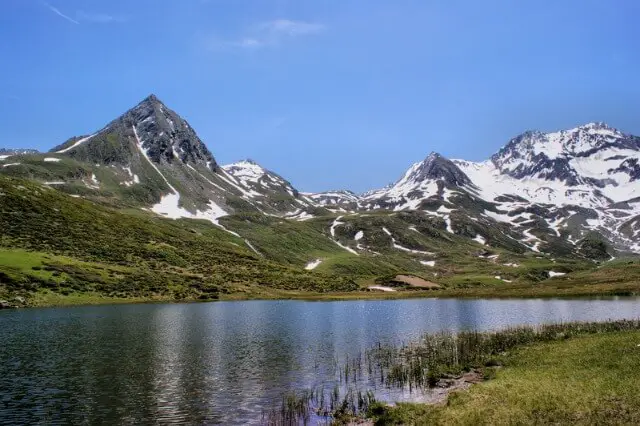Passeiertal Valley: A Brief Overview
Passeiertal Valley (Val Passiria in Italian), starting at the historic spa town of Merano and winding a trail right through the spectacular peaks of the Oetztal, Stubaier and Sarntaler Alps, is widely acknowledged to be one of the finest locations for hikers in the region. Of course, South Tyrol in general, with its verdant meadows, mountain peaks and scenic waterways, never fails to delight walkers from across the globe; but Passeiertal Valley, which boasts a huge diversity of well-marked walking paths and mountain trails, offers something particularly special.
Exploring Passeiertal Valley on Foot
This beautiful valley is also situated within South Tyrol’s Texelgruppe Nature Reserve and mountain range. As a result, it offers a large number of walking routes through mountain passes, alpine meadows and woodland; and has some really remarkable scenery to explore, including 20 glacial lakes and several sites with ancient prehistoric remains.
Seasoned walkers may want to head to the mountains and take on the route between Timmelsjoch and St. Leonhard (elevation 2,474m / 8,117ft) which is part of the famous E5 trail and takes roughly 7 hours to complete. Alternatively, the Alta Via of Tirolo (‘Old Road’ in English) runs from Mayrhofen (Austria) to Merano and consists of 130km (81mi) of hiking paths, with ascents of 9000 metres (about 30,000ft) in total. Allow up to 13 days to complete the entire trail, as it is extensive and challenging.
Things to do in Passeiertal Valley on a Rainy Day / Rest Day
There’s no shortage of things to do in Passeiertal Valley and the surrounding areas during your rest day, or when the weather isn’t good enough for hiking. The scenic towns of Merano and Bozen offer plenty in the way of entertainment, with museums, ancient churches and restaurants in abundance, and there are many impressive castles in the near vicinity; most famously Castel Tirolo, an imposing fortress and ancient ancestral seat of the Princes of Tirolo.
Whilst in the region, be sure to visit the Passeier Museum, which is situated in the birthplace of local hero, Andreas Hofer, and tells visitors all about his legendary life. The famous local cuisine and wineries are also sure to please; and indeed, if you’re a bit of a connoisseur, you’ll probably appreciate a tour of some of the local vineyards.
Climate in Passeiertal Valley
Thanks to the pleasant Mediterranean climate, it’s perfectly possible to enjoy a walk in Passeiertal Valley (including in the mountains) right through until around October, after which, of course, the area starts to look to the winter, and to its transformation as one of the country’s most popular skiing areas.
In summer, expect temperatures to regularly exceed 25˚C, and in Spring and Autumn, anticipate that temperatures will still be a pleasant 15˚C to 25˚C.
Wildlife in Passeiertal Valley
Nature lovers will take great delight in the range of wildlife in the Passeiertal Valley and the surrounding area. The Texelgruppe Nature Reserve is renowned for its resident flora and fauna, and it’s not uncommon to capture a glimpse of a Golden Eagle circling a mountain peak, or an Ibex standing on a cliff.
The Texelgruppe Nature Reserve is home to many protected species of plant, including the Dolomite columbine, the Fire Lily and several types of other lily. The warm climate encourages a wide variety of sub-Mediterranean trees and plants to flourish.
How to Get to Passeiertal Valley
If you’re arriving by plane, then the nearest international airports are located at Innsbruck and Verona; both of which have buses and trains running to Merano. Indeed, Merano is well served by public transport, and is also easy to access by car, if you’re driving to the region.

